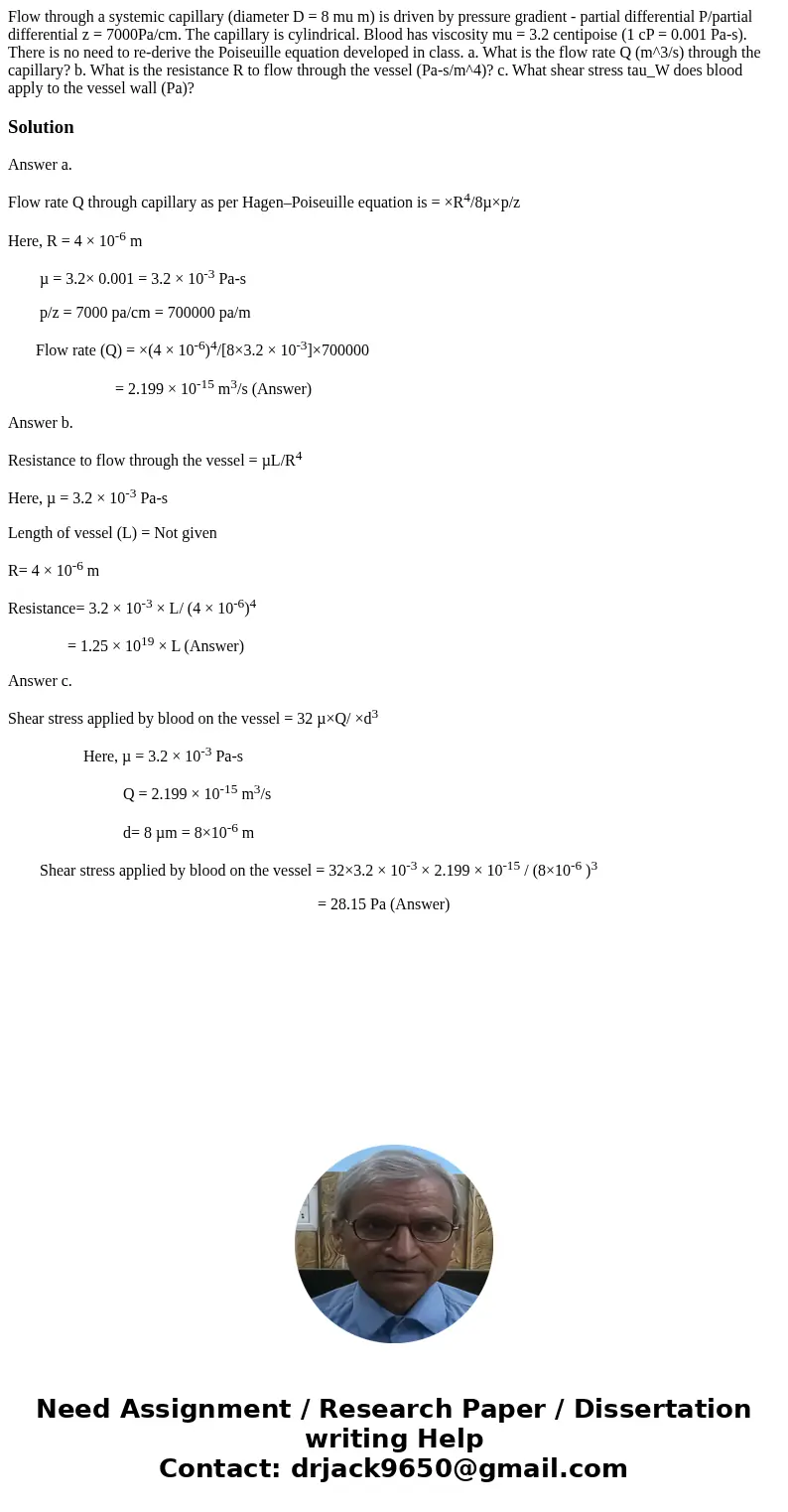Flow through a systemic capillary diameter D 8 mu m is driv
Solution
Answer a.
Flow rate Q through capillary as per Hagen–Poiseuille equation is = ×R4/8µ×p/z
Here, R = 4 × 10-6 m
µ = 3.2× 0.001 = 3.2 × 10-3 Pa-s
p/z = 7000 pa/cm = 700000 pa/m
Flow rate (Q) = ×(4 × 10-6)4/[8×3.2 × 10-3]×700000
= 2.199 × 10-15 m3/s (Answer)
Answer b.
Resistance to flow through the vessel = µL/R4
Here, µ = 3.2 × 10-3 Pa-s
Length of vessel (L) = Not given
R= 4 × 10-6 m
Resistance= 3.2 × 10-3 × L/ (4 × 10-6)4
= 1.25 × 1019 × L (Answer)
Answer c.
Shear stress applied by blood on the vessel = 32 µ×Q/ ×d3
Here, µ = 3.2 × 10-3 Pa-s
Q = 2.199 × 10-15 m3/s
d= 8 µm = 8×10-6 m
Shear stress applied by blood on the vessel = 32×3.2 × 10-3 × 2.199 × 10-15 / (8×10-6 )3
= 28.15 Pa (Answer)

 Homework Sourse
Homework Sourse